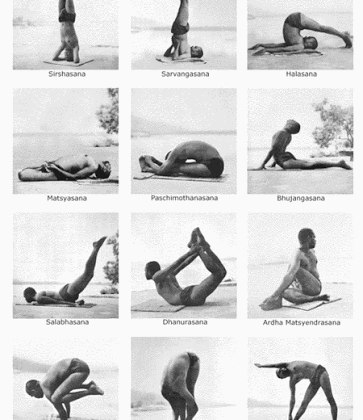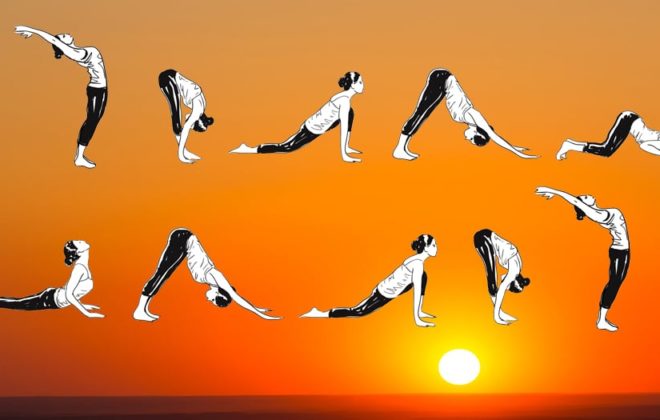Yoga to prevent and treat back pain
BACKACHE?
YOGA A VALID HELP FOR PREVENTING AND CURING BACK PAIN
- Back pain is almost never due to bone problems, it almost always depends on a difficulty in the functioning of a tiny component (muscles, ligaments, disc).
- Back pain with postural cause is due to incorrect habits, behaviors and postures or to incorrect movements such as the wrong way to lift a weight.
- Almost 90 percent of cases of back pain occur in the lumbar area and are often felt when a weight has to be lifted from the ground, with a pain that manifests itself with a very acute tearing or burning sensation, so much so that it is seriously difficult when not impossible to reach the standing position. This type of low back pain, which in Italian is sometimes defined as a witch’s stroke, and in English more appropriately low back pain, is of the bar type, transversal in the lumbar part; when there is irradiation to the sciatic nerve it is referred to as lumbosciatalgia. If it is not an isolated episode but becomes a chronic pain, the cause is usually found in an incorrect posture; maintaining an upright position for too long, or sitting too long while driving, are typical cases of behavior that can lead to chronic low back pain.
- The millennial practice of yoga was the subject of a study, conducted by researchers at Boston University School of Medicine (BUSM), of 95 adult subjects with moderate to severe low back pain (or lower back pain). The study was published in Evidence-Based Complementary and Alternative Medicine. Professor Robert Saper, of BUSM, and director of Integrative Medicine at BMC, found after 12 weeks of follow-up how the practice of yoga, even just once a week, was effective in reducing back pain.
- Of course there are many Asanas that can be helpful. I do not pretend to offer an exhaustive list, but with experience they have proved to be efficient and can be practiced by everyone. Here is a small effective sequence against back pain:
- As a warm-up you can use “SAPTA-MUDRA” (at the end of the video you will find “sarduli-mudra”, the gesture of the tiger, which is very useful) or “GREETING TO THE SUN”

TRIKON-ASANA, The triangle, symbol of balance between masculine and feminine, Shiva and Shakti.
In a standing position, feet apart approx. one meter we rotate the right foot on the heel bringing it in profile. Breathing in, raise your arms stretched sideways, bringing them parallel to the ground on the shoulder line. Breathing out, stretching first to the right, we then bend the torso laterally to the right until we grab the calf or ankle with the right hand. It is important not to lean forward, stop in the descent when the torso tends to lean forward. The left arm stretched out and up in line with the right arm, the gaze turned upwards, cervical permitting, otherwise forward or down.
Maintain for 5 to 15 breaths, then inhaling slowly lift the torso bringing the arms parallel to the ground and the right foot rotates bringing it straight. Then it is repeated in the same way and times on the left side.
It helps us to overcome the fragilities of body and mind.
Since a correct back posture depends a lot on the tone of the abdominal muscles, the gluteus maximus and the rectus muscles of the thigh or quadriceps; it is good practice to strengthen the before mentioned muscle groups!

VAJRA-ASANA, lightning, powerful weapon of Indra Vedic king of the skies.
On your knees, with your legs together, on inhaling we raise our arms forward and exhaling we lean back towards our feet without arching our backs or pushing our abdomen forward. Tight glutes and active abdominals keep the torso in a straight line from the knees to the shoulders. Arms parallel to the ground. Maintain form for 5 to 30 breaths.
Breathing in, bring your torso straight and rest by sitting between your heels. It helps us to mitigate our excessive emotionality and to overcome our fragilities

ADHO-MUKHA-SVAN-ASANA, the downward facing dog. All fours with hands under the shoulders and knees under the hip joint, feet on the ground. The distance between arms and legs is equal to the length of the torso. Breathing in, force your hands and toes to lift your pelvis up. The torso and legs thus form an acute angle, gradually, always if possible, the heels descend to the ground (with severe pain in the back and / or hind leg ligaments, short and painful, flex the knees slightly). Arms and torso are on the same line, neck and head are relaxed. Legs, torso and arms must have the same strength, in balance. However, attention is focused on the back which stretches and straightens.
It helps us overcome laziness and apathy,

4. NAVA-ASANA, the vessel, Sitting on the ground, we hug the knees tightening towards the chest, and lift the feet. By swinging on the pelvis, we seek balance on the small triangle between the sitbones and the coccyx. Breathing in, the legs and arms are raised together, stretching the legs towards the sky and the arms move next to the thighs parallel to the ground. Do not collapse on the buttocks and do not arch your back, let the tension slip away from the neck and shoulders. The position is generally quite tiring, you can keep it for a few breaths, when you feel fatigue return to the starting position and then after a few rest breaths return to position.

A less demanding variation brings the knees to bend while keeping the lower legs from the knees down parallel to the ground, you can also support the knees with your hands. Hold the pose for 5 to 30 breaths or as indicated above. It helps us to balance activity and rest, to eat calmly and to “digest” food and experiences in due time.

5. BHASTRIKA-ASANA, the bellows.
Lying on the ground, placing the whole torso well, feeling all the points of contact with the ground, flex the knees, embracing and tightening them to the chest. Maintain 5 to 30 breaths listening to the flow of the calm and regular breath, trying to relax your back with each exhalation.
The variant in motion dinamically BHASTRIKA-MUDRA brings the fingers intertwined on the knees and with each exhalation the knees are pressed towards the chest and with each inhalation we let them move away.
By doing BHASTRIKA-ASANA and BHASTRIKA MUDRA in the morning before getting up while still lying in bed, prepares your back in a favorable way for the day without pain. I have practiced it for years every morning, since with my lumbar hyperlordosis I had suffered from back pain for half life. A problem solved !!!!
Then extend the whole body, feet open to the side, arms slightly detached from the torso with palms facing up. Lengthen the nape line by bringing the chin slightly towards the breastbone. If you feel discomfort or pain in this position, turn to your left side, flexing your knees and placing a pillow under your head. Mentally pass the whole body and consciously relax every muscle, remain in this state of deep relaxation for at least 5/10 minutes.
With severe spinal problems and severe back pain, contact a qualified yoga teacher who can guide and help you in your practice and / or offer you other exercises that are more suitable for your personal case.
Did you like the article? Share it and / or post a comment
With gratitude
Namastè Sabine
Categories
- Senza categoria (10)



